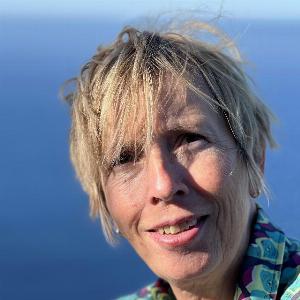Interview by Valerio Caruso, Cineuropa
Anne Marie Borsboom, the founder of ShareDoc, breaks down her tool designed to bridge the gap between documentary lovers and immediate action, enabling viewers to support protagonists and drive social impact.
Cineuropa: Why did you create Share-Doc.org?
Anne Marie Borsboom: I'm a filmmaker, so I make documentaries and I love documentaries. And I was always so irritated by the fact that when a film is shown at a festival or wherever, people don’t know what to do if their heart is bleeding and they want to do something. I call it the post-documentary blues. We thought this could easily be resolved by giving them a tool they could use to lend their support.
The tool would be a QR code to scan at the end of a screening – then, the audience can donate directly to the protagonists whose lives they have just observed. Or if not financially, then they can engage in impact-related activities in other ways, such as by starting a petition or organising a protest.
Which target market do you intend to serve?
Doc watchers “with a philanthropic mindset”. We exist to amplify the social impact of documentaries for the protagonists and charities involved in the project. We believe in guiding the audience towards immediate action while bridging the gap between the documentary industry and documentary lovers. It's time to act! Our documentary-focused platform bridges the gap by enabling the audience to take action immediately after watching the film. We are a non-profit platform with easy-to-access technology that facilitates action and brings additional value to the industry by enabling it to measure the impact of each film while increasing audience engagement and participation.
What have the results been like so far?
Of course, I had great expectations, but the results after a little more than six months are amazing. With only a few documentaries, we have already received more than €42,000 in donations and more than 38,000 visits at just a few festivals since IDFA last year. And the best result of all is that we hear from the filmmakers that the audience is so happy to be able to do something. They are happy to overcome their post-documentary blues by taking immediate action.

Anne Marie Borsboom • Founder, ShareDoc
Can you give some examples of content on the platform?
Today, we have 30 documentaries. Each film has its own private page. We started with A House Made of Splinters by Simon Lereng Wilmont, which turned out to be a success. To be clear, the films cannot be viewed on our platform. So a filmmaker or producer creates a page, and they decide on the content; ShareDoc only advises sometimes. When these films find their audience, at film festivals, in cinemas or via VoD broadcasts, we see high figures in terms of engagement. Because we monitor the incoming views and incoming donations live, it’s exciting for everyone to see.
We discovered in this short period of time that about 2,000 people scan the QR code at the end of a screening, but of course, not all of them immediately want to donate. But the reason why people scan the QR code has to do with their empathy for the film. People want to know more and be engaged. They would like to do something, even if it is not donating. So we advise the filmmakers and producers not only to activate a button for donations, but also to add the “Hands On” button. The platform is expanding the content with more and more facts and information, and as a result, we can measure impact via all kinds of layers, which is of great value to the film industry.

 DE
DE
 EN
EN
 FR
FR
 ES
ES